Navigating the Dangers of Catfishers on Social Media
In today's digital age, social media has become an integral part of our daily lives. It allows us to connect with friends, share experiences, and even meet new people. However, lurking behind the screens are individuals who engage in deceptive practices, known as catfishers. These are people who create false identities online, often with the intent to manipulate or exploit others emotionally and financially. Understanding the risks associated with catfishing is crucial for anyone who spends time on social platforms. This article delves into the intricacies of catfishing, helping you identify potential threats and equipping you with the tools to protect yourself.
At its core, catfishing is the act of creating a fake persona on social media to deceive others. The motivations behind catfishing can vary greatly. Some individuals may be seeking companionship, while others might aim to scam victims out of money. The emotional and psychological toll on victims can be profound, leading to feelings of betrayal, confusion, and even depression. Imagine investing time and emotions into a relationship only to find out that the person on the other end is a complete fabrication. It’s a painful reality that many have faced, and it underscores the importance of vigilance when interacting online.
Identifying the warning signs of catfishing is crucial to safeguarding yourself. There are several common behaviors and characteristics that may indicate someone is not who they claim to be online. For instance, if a person is overly eager to share personal information but avoids answering questions about themselves, that's a significant red flag. Additionally, if their stories seem inconsistent or too good to be true, it's time to proceed with caution. Always trust your instincts; if something feels off, it probably is.
A thorough examination of social media profiles can reveal inconsistencies that might indicate deceptive behavior. Look for key elements such as:
- Photos: Are the images high-quality or generic stock photos?
- Mutual Friends: Do you have any connections in common, or is the friend list sparse?
- Engagement Patterns: How often do they interact with others? Real users typically have a history of comments and likes.
One of the simplest ways to verify the authenticity of profile pictures is to conduct a reverse image search. This tool allows you to see where else a photo has appeared on the internet. If the same picture is associated with multiple names or profiles, it's a strong indication of a catfisher. Additionally, take note of the context in which the photos are used. Are they all from the same event or location, or do they seem random and disconnected?
Analyzing a user's friend list can provide insights into their authenticity. If the individual has a large number of friends but little interaction with them, or if their friends seem suspiciously similar, it might be time to raise an eyebrow. Genuine users tend to have a diverse range of friends and engage with them regularly. Mutual connections can also serve as a safety net; if you share friends, it’s more likely that the person is who they claim to be.
The way individuals communicate can reveal their true intentions. Pay attention to language patterns, inconsistencies, and the use of generic responses. If someone consistently avoids personal questions or provides vague answers, they may be hiding something. Genuine conversations should flow naturally and include personal anecdotes. If you find yourself feeling like you’re talking to a robot, it’s time to reconsider the relationship.
Taking proactive measures can help mitigate the risk of falling victim to catfishers. One of the most effective strategies is adjusting your privacy settings on social media platforms. Ensure that your personal information is visible only to trusted friends. Additionally, establishing trust should be a gradual process. Don’t rush into sharing personal details; take your time to get to know the person behind the profile.
Adjusting privacy settings is vital for safeguarding personal information. Make sure you regularly review your privacy settings on various platforms to ensure they align with your comfort level. Keep in mind that even seemingly harmless information can be used against you.
Establishing trust should be a gradual process. Take the time to engage in meaningful conversations and ask questions that require more than surface-level responses. Building rapport takes time, and it’s essential to be cautious when sharing personal information. Remember, if someone is truly interested in you, they will respect your boundaries and understand your need for caution.
If you suspect you've encountered a catfisher, knowing how to respond is essential. First and foremost, don't engage further. Stop all communication and consider reporting the account. Most social media platforms have procedures in place for reporting suspicious accounts, which can help protect others from falling into the same trap. Blocking the individual is also a crucial step to ensure they cannot contact you again.
Reporting suspicious accounts can help protect others. Each social media platform has specific procedures for reporting catfishers. Familiarize yourself with these processes to act swiftly if needed. Blocking them from your account is equally important; this will prevent any future unwanted interactions.
Emotional support is crucial for victims of catfishing. If you find yourself affected by online deception, don’t hesitate to reach out to friends, family, or support groups. Many communities exist online where individuals can share their experiences and receive guidance. Remember, you are not alone in this, and seeking help is a sign of strength.
Q: What should I do if I think I’m being catfished?
A: If you suspect that you are being catfished, cease communication immediately, report the account, and block them to prevent further contact.
Q: How can I verify someone's identity online?
A: Conduct a reverse image search on their profile pictures and analyze their social media interactions. Look for inconsistencies in their stories and communication styles.
Q: Are there any signs that indicate a potential catfisher?
A: Yes, common signs include vague responses, reluctance to meet in person, and a lack of mutual connections or genuine engagement on their profile.
Q: What should I do if I’ve been a victim of catfishing?
A: Seek emotional support from friends or support groups, report the catfisher to the platform, and take time to heal from the experience.

Understanding Catfishing
Catfishing is more than just a buzzword; it's a serious issue that affects countless individuals across social media platforms. At its core, catfishing involves creating a false identity online with the intent to deceive others. This deceptive practice can stem from a variety of motivations, ranging from a desire for companionship to more malicious intents like financial fraud. Imagine someone crafting an entire persona, complete with fabricated stories and altered images, all to lure in unsuspecting victims. It's like a modern-day masquerade ball, where the masks are digital and the stakes can be incredibly high.
But why do people engage in catfishing? The reasons can be as diverse as the individuals themselves. Some catfishers might be seeking validation or attention that they feel they lack in their real lives. Others may be trying to escape their own realities, creating an alternate life where they can be whoever they wish. Unfortunately, the emotional and psychological impact on victims can be profound. Victims often experience feelings of betrayal, confusion, and even shame when they discover they've been deceived. It's not just about losing trust; it's about the emotional rollercoaster that comes with investing time and feelings into someone who doesn't truly exist.
Victims may also face long-term psychological effects such as anxiety, depression, and low self-esteem. The realization that someone has manipulated their emotions can lead to a deep sense of vulnerability. In many cases, victims are left questioning their judgment and ability to connect with others. This is why understanding catfishing is crucial—not just for recognizing it when it happens, but also for developing a healthy approach to online interactions.
In order to combat this phenomenon, it's essential to educate ourselves about the signs of catfishing and the tactics used by catfishers. By raising awareness, we can better protect ourselves and others from falling victim to these deceptive practices. Remember, the digital world is vast and often unpredictable, so staying informed is your best defense.

Recognizing Red Flags
When it comes to navigating the murky waters of social media, recognizing the red flags of catfishing can be your lifeline. Imagine you're out at sea, and a storm suddenly brews—those warning signs can save you from capsizing. Catfishers often exhibit certain behaviors and characteristics that can help you identify them before it's too late. So, what should you be on the lookout for? Let's dive into some common indicators that someone might not be who they claim to be online.
First and foremost, consider the content of their profile. An account with few photos, vague descriptions, or generic interests can raise eyebrows. If you stumble upon a profile that seems to have been hastily put together, that's your first clue. A genuine person will likely have a more fleshed-out profile, complete with personal anecdotes and a variety of images. If their profile picture looks like it's straight out of a stock photo library, that's another red flag. You might want to perform a quick reverse image search to see if that picture has appeared elsewhere on the internet.
Next, pay attention to their friendship patterns. A catfisher often has a sparse friend list or friends who all have similar, suspicious profiles. If you notice that a person has an unusually high number of friends but minimal interaction with them, it’s time to raise an eyebrow. Genuine users often have mutual connections, and those connections can lend credibility to their online persona. If you can’t find any mutual friends or if their friends seem to be fake accounts, it’s a strong indication that something isn’t right.
Communication style is another crucial aspect to scrutinize. Catfishers often struggle with maintaining a consistent tone or may use overly formal language that feels out of place in casual conversation. If their messages seem scripted or if they frequently respond with generic replies, that’s a significant red flag. Real conversations are dynamic and fluid; they evolve based on context and emotion. If you feel like you’re talking to a robot instead of a person, trust your instincts.
To further illustrate these points, here’s a handy table summarizing key red flags to look out for:
| Red Flag | Description |
|---|---|
| Incomplete Profile | Few photos and vague information may indicate a fake account. |
| Unusual Friendship Patterns | A lack of mutual friends or suspicious-looking friends can suggest deception. |
| Generic Communication | Responses that feel scripted or overly formal can indicate a lack of authenticity. |
| Inconsistent Stories | Contradictory information about their life can signal dishonesty. |
In conclusion, being aware of these red flags can help you steer clear of potential catfishers. Always trust your gut; if something feels off, it probably is. The online world can be a wonderful place for connection, but it also comes with its share of dangers. By staying vigilant and paying attention to these warning signs, you can protect yourself from falling victim to someone else's deception.
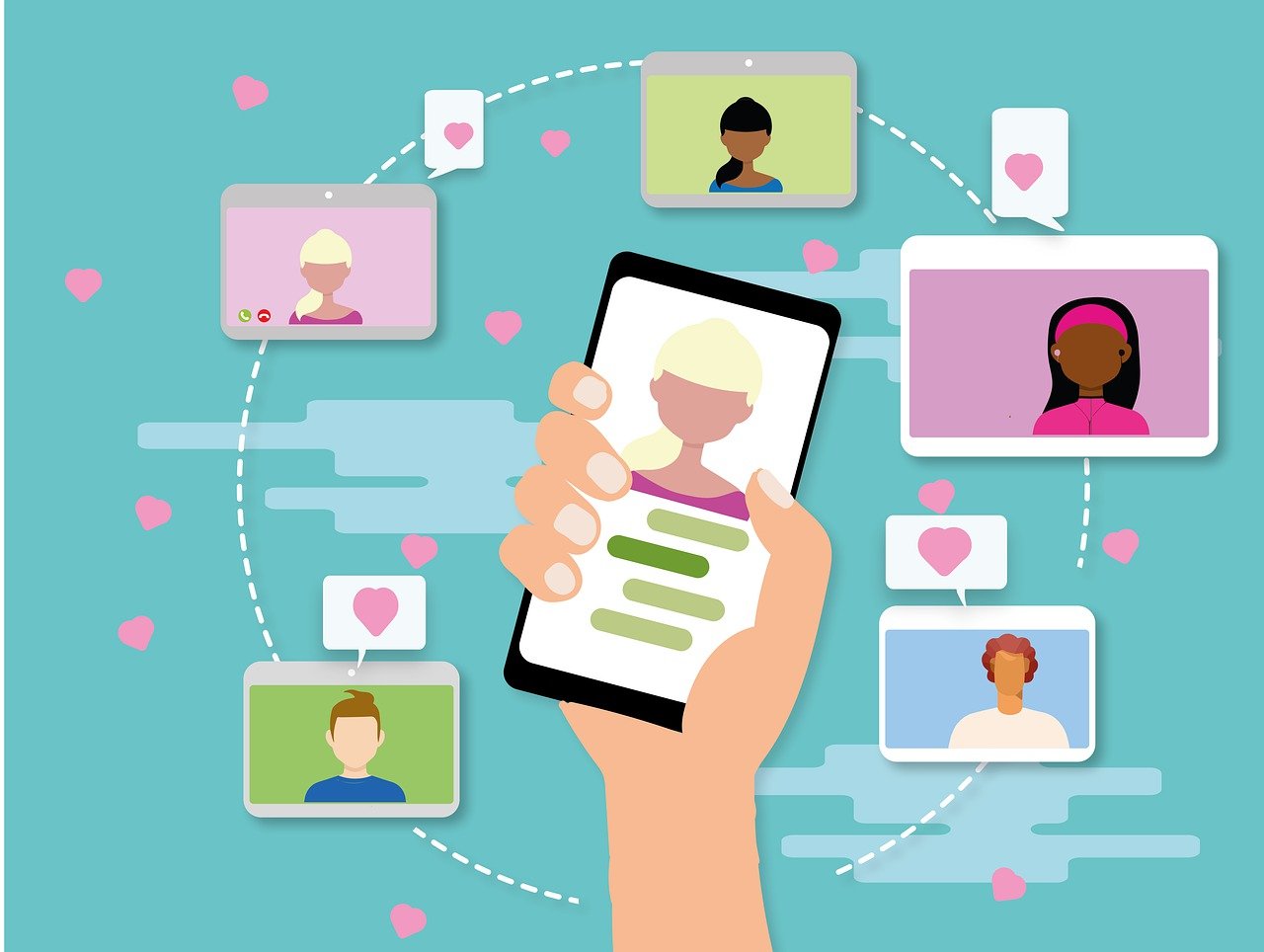
Profile Analysis
When it comes to navigating the murky waters of social media, is your lifebuoy. It's like being a detective in a world full of digital disguises. You see, catfishers often leave behind a trail of inconsistencies that can lead you straight to the truth. So, how do you become a savvy investigator? Start by examining the various elements of a social media profile.
One of the first things to scrutinize is the profile picture. Is it a professional headshot, a glamorous vacation photo, or something more generic? Catfishers frequently use images that can be easily found online or, in some cases, stolen from real people. If the profile picture looks too good to be true, it probably is. A great tool for verifying images is a reverse image search. This method allows you to see where else that image appears on the internet, potentially revealing its true source.
Next up, take a close look at the friend list. A genuine profile typically boasts a mix of friends, acquaintances, and family members. If the account has only a handful of connections or, conversely, an overwhelming number of friends who all seem to have similar names or profile pictures, that should raise a red flag. Mutual friends can serve as a safety net; they can help validate the authenticity of the person you're interacting with. Remember, if you’re talking to someone who has no mutual connections with you, it’s worth questioning their legitimacy.
Engagement patterns also offer valuable insights. Look at how the individual interacts with others. Do they frequently comment on friends' posts, or do they mostly post in isolation? A catfisher often maintains a low profile, avoiding interactions that could expose their false identity. If you notice that the person you’re communicating with rarely engages in meaningful conversations or seems to use generic responses, it’s time to be cautious.
To sum it up, profile analysis is a crucial step in identifying catfishers. By examining profile pictures, friend lists, and communication patterns, you can uncover inconsistencies that might reveal a deceptive persona. Always trust your instincts; if something feels off, it probably is. Remember, the digital world is vast, and while it offers amazing connections, it also harbors those who seek to deceive. Stay vigilant and protect yourself from falling into the catfish trap.
- What is catfishing? Catfishing is the act of creating a false identity online to deceive others, often for romantic or financial gain.
- How can I tell if someone is a catfisher? Look for inconsistencies in their profile, such as generic photos, a lack of mutual friends, and unusual communication patterns.
- What should I do if I suspect someone is catfishing me? Consider reporting and blocking the account, and seek support from friends or online communities.
- Is it safe to meet someone from social media in person? Always take precautions. Meet in public places and let someone know where you are going.
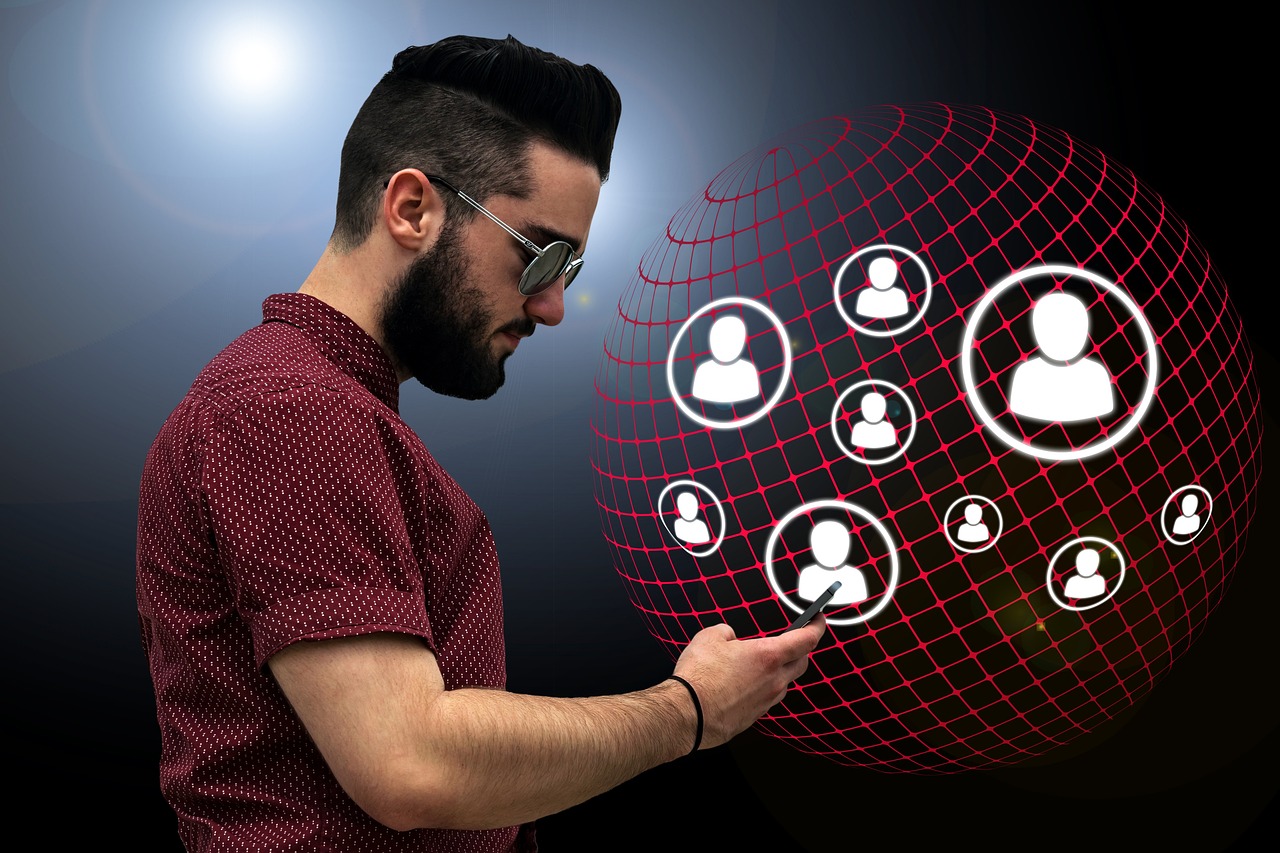
Photo Verification
In the digital age, where a picture can speak a thousand words, it’s essential to remember that not all images are what they seem. is a crucial step in identifying potential catfishers lurking behind alluring profile pictures. Why? Because a carefully curated image can mask a multitude of lies. To effectively verify the authenticity of a profile picture, consider employing a few strategic methods that can help you peel back the layers of deception.
First and foremost, one of the most effective tools at your disposal is the reverse image search. This process allows you to upload a photo or provide a link to an image, and it will scour the internet for instances where that picture appears elsewhere. Tools like Google Images or TinEye can be invaluable in this regard. If the image pops up on multiple unrelated profiles or websites, it’s a glaring red flag that the person may not be who they claim to be. It’s like finding a suspiciously familiar face at a party—something just doesn’t add up!
Next, when you find a profile picture that seems too good to be true, take a closer look at the image itself. Look for signs of photo manipulation. Is the lighting inconsistent? Are there odd shadows or blurring? These can be indicators that the photo has been altered or taken from another source. Additionally, pay attention to the background of the photo; does it look staged or overly polished? Authentic photos usually have a more candid feel, capturing genuine moments rather than perfectly posed scenarios.
Moreover, you should examine the source of the photo. If the profile has multiple pictures, do they all appear to be professional shots? Catfishers often use stock photos or images of models to create a façade. Look for user-generated content that reflects real-life activities—this can often be a sign of authenticity. If their profile is filled with images that look like they belong in a magazine rather than a personal album, it’s time to proceed with caution.
Lastly, consider reaching out to the person in question about their photos. A genuine individual will likely be happy to share more details about the context of their images. Ask them about where the photo was taken or the story behind it. If their responses are vague or evasive, it could indicate that they’re not being truthful. Remember, building trust takes time, and anyone worth your attention will appreciate your curiosity.
In summary, photo verification is not just about scrutinizing images; it’s about piecing together a puzzle to reveal the truth. By using reverse image searches, analyzing photo quality, checking the source, and engaging in conversation, you can better protect yourself from the emotional turmoil that comes with catfishing. So, the next time you find yourself enchanted by a profile picture, take a moment to dig a little deeper. It could save you from a potentially heart-wrenching experience.
- What is a reverse image search? A reverse image search allows you to find where an image appears on the internet, helping to verify its authenticity.
- How can I tell if a photo has been manipulated? Look for inconsistent lighting, odd shadows, or overly polished backgrounds, which can indicate photo manipulation.
- What should I do if I suspect someone is a catfisher? Trust your instincts, conduct a photo verification, and consider reporting the profile if you find evidence of deception.

Friendship Patterns
When it comes to identifying a potential catfisher, one of the most telling signs can often be found in their . Just like a detective sifting through clues, you can gain insights into a person's authenticity by examining who they associate with online. If you notice that someone has a very limited number of friends, or worse, a friend list filled with accounts that seem equally suspicious, this could be a red flag. Genuine users typically have a diverse network of friends, including people from various aspects of their life—school, work, and social activities. In contrast, catfishers often create profiles with minimal connections to avoid raising suspicion.
Moreover, consider the mutual friends you share with this individual. If you have no mutual connections or the connections are all new accounts, this could indicate that the person is attempting to keep their online persona isolated. A lack of mutual friends can be a sign that the person is not who they claim to be. Genuine profiles often have friends who can vouch for them, and if you find yourself in a situation where the person is evasive about their friends or their background, it's time to tread carefully.
Additionally, take a closer look at how these friendships are built. Are they engaging with their friends regularly? Do they comment on posts, share experiences, or interact in a meaningful way? A catfisher might have a friend list full of names but lack any real engagement. This can often manifest in a pattern where the individual has many friends but minimal interaction, which can be a significant indicator of their true intentions. For instance, if you see a profile that has hundreds of friends but only a few likes or comments on their posts, it may be worth investigating further.
To summarize, when evaluating friendship patterns on social media, here are some key points to keep in mind:
- Limited Connections: Few friends or suspicious accounts may indicate a catfisher.
- Lack of Mutual Friends: No shared friends can signal a fabricated identity.
- Minimal Engagement: Profiles with many friends but little interaction should raise concerns.
By being vigilant about these friendship patterns, you can better protect yourself from falling victim to catfishing. Remember, in the world of online interactions, it's always better to be safe than sorry!
Q: What should I do if I suspect someone is a catfisher?
A: If you suspect someone is a catfisher, it's essential to trust your instincts. Gather any evidence you can, such as screenshots of conversations or suspicious profile details. Then, report the account to the social media platform and consider blocking them to prevent further contact.
Q: Can a catfisher use real photos of someone else?
A: Yes, catfishers often use photos of real people to create a false identity. This is why it's crucial to verify images through reverse image searches to check if they appear elsewhere on the internet.
Q: How can I protect myself from catfishing?
A: To protect yourself, adjust your privacy settings, be cautious about sharing personal information, and take your time getting to know someone online. Always look for inconsistencies in their story and interactions.

Communication Styles
When it comes to identifying a catfisher, one of the most telling signs lies in their communication style. Often, the way someone interacts can reveal their true intentions, and it’s essential to pay close attention to these nuances. Have you ever noticed how some people seem to have a script they follow? They respond to your questions with generic answers that could fit anyone, almost as if they’re reading from a manual. This is a classic red flag! Genuine conversations flow naturally, with personal anecdotes and unique responses that reflect the individual’s personality.
Another important aspect to consider is language patterns. Catfishers often use vague language or avoid specific details about themselves. For instance, if someone claims to be a doctor but can’t elaborate on their field or share their experiences, it’s worth raising an eyebrow. Authentic individuals are usually eager to share their passions and experiences. If the conversation feels one-sided or lacks depth, it might be time to reassess the authenticity of your online friend.
Moreover, be cautious of inconsistencies in their stories. A catfisher may tell you one thing today and contradict themselves tomorrow. This inconsistency can manifest in various forms, such as differing details about their job, family, or even their location. If you find yourself keeping track of what they say to piece together a coherent narrative, it’s a sign that something isn’t quite right.
Lastly, consider the emotional tone of their messages. Genuine people often express emotions that are relatable and sincere. If someone is overly emotional or dramatic in their responses, it could be a tactic to manipulate your feelings. Conversely, a lack of emotional response can also be suspicious. It’s almost as if they’re trying to maintain a facade without truly engaging. Always remember, if something feels off, trust your instincts!
In summary, communication styles are a crucial element in spotting potential catfishers. By paying attention to language patterns, inconsistencies, and emotional tones, you can protect yourself from deceptive online personas. So, the next time you’re chatting with someone online, take a moment to analyze how they communicate. It might just save you from a tangled web of deceit!
- What should I do if I suspect someone is a catfisher? If you suspect someone is a catfisher, trust your instincts. You can confront them directly, but it's often safer to report and block them on the platform.
- How can I protect my personal information online? Adjust your privacy settings on social media platforms, avoid sharing sensitive information, and be cautious about who you accept as friends or followers.
- What are the emotional effects of being catfished? Victims of catfishing may experience feelings of betrayal, shame, and confusion. It's essential to seek support from friends, family, or professionals if you're affected.
- Are there any resources for victims of catfishing? Yes, there are online communities and support groups that can help victims of catfishing. Look for forums or social media groups focused on online safety and support.

Preventing Catfishing
When it comes to navigating the murky waters of social media, prevention is your best ally against catfishing. Just like you wouldn’t leave your front door wide open while you’re away, you shouldn’t leave your online presence unguarded. The first step in this digital self-defense is adjusting your privacy settings. Each social media platform has its own set of privacy controls, and it’s crucial to familiarize yourself with them. For instance, on Facebook, you can limit who sees your posts and who can send you friend requests. This simple act can significantly reduce the chances of unwanted attention from potential catfishers.
But it doesn’t stop there. Building trust with someone online should be a gradual process—think of it like planting a seed. You wouldn’t water a seedling with a fire hose, right? Instead, you’d nurture it gently, allowing it to grow steadily. Similarly, take your time when getting to know someone online. Look for signs of genuine interest and engagement rather than rushing into sharing personal details. If someone is eager to know everything about you but is vague about their own life, that’s a red flag!
Moreover, consider the importance of mutual connections. If you’re chatting with someone who claims to be a friend of a friend but has no mutual acquaintances in common, it’s worth digging deeper. You can even ask your mutual friends about this person to gauge their legitimacy. This can be a great way to verify someone’s identity. Remember, catfishers often create profiles with few or no connections to avoid detection.
Additionally, be wary of any communication that feels off. For example, if your online acquaintance uses generic responses or seems to avoid answering direct questions about themselves, it could indicate that they’re not being truthful. Consider keeping a mental note of their communication style. If it feels rehearsed or scripted, that’s a sign to tread carefully.
In the fight against catfishing, knowledge is power. The more you educate yourself about the tactics used by catfishers, the better equipped you’ll be to recognize and avoid them. Stay informed about the latest scams and techniques that catfishers employ. Online forums, articles, and even social media groups dedicated to online safety can be invaluable resources. Remember, while the internet can be a fantastic place to connect with others, it’s also a playground for deception. So arm yourself with knowledge and remain vigilant.
Finally, trust your instincts. If something feels off about a conversation or a person, don’t hesitate to step back and reassess. Just like in the real world, if a stranger makes you uncomfortable, it’s okay to walk away. Your safety and peace of mind should always come first!
- What should I do if I suspect someone is a catfisher?
First, trust your gut. If you feel something is off, investigate further. Look for inconsistencies in their stories and verify their profile information. If you’re still unsure, it’s best to cease communication. - Can I report a catfisher on social media?
Yes! Most platforms have a reporting feature. Use it to alert the platform about suspicious accounts. This helps protect not just you, but others who might be targeted. - How can I protect my personal information on social media?
Make sure to adjust your privacy settings, limit the information you share publicly, and be cautious about accepting friend requests from strangers.
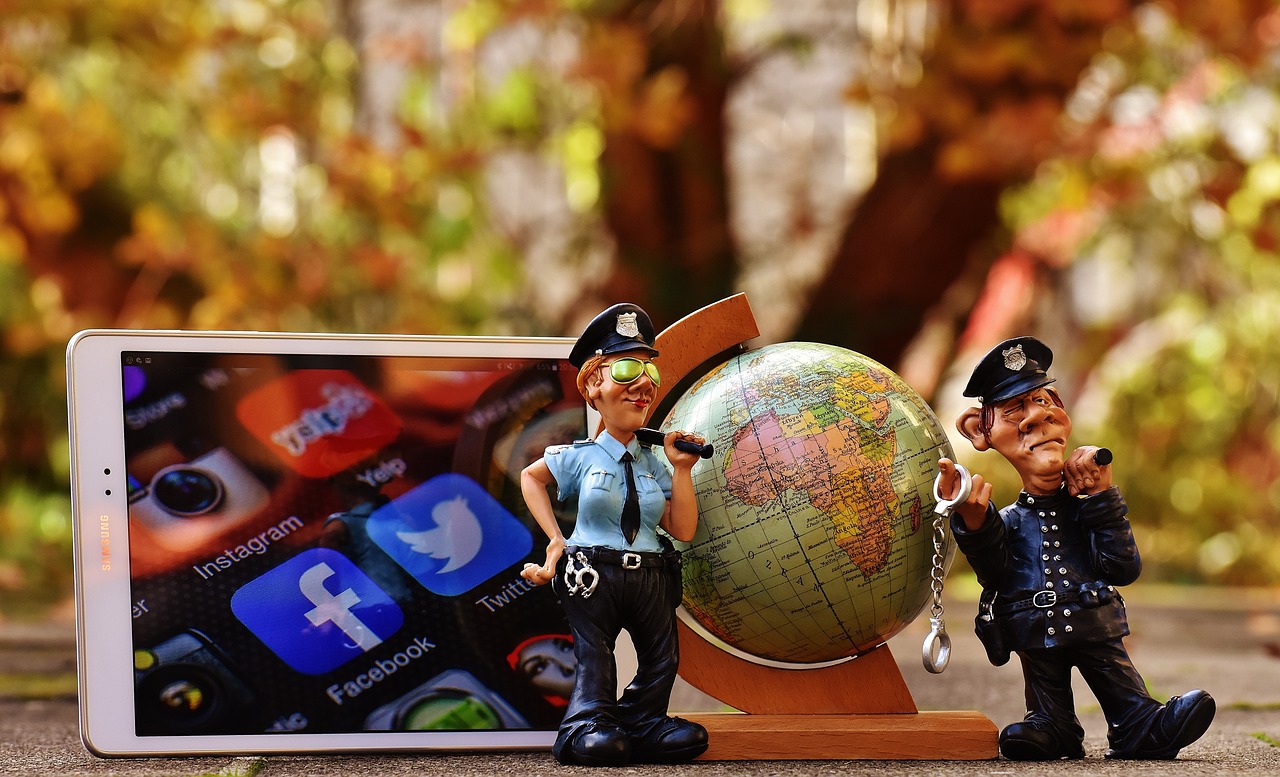
Setting Privacy Settings
In today's digital age, privacy settings are your first line of defense against catfishers and other online threats. It's astonishing how many people overlook this crucial aspect of their social media presence. Think of your privacy settings as the locks on your front door; without them, you're leaving your home wide open for anyone to walk in. So, how can you ensure that your personal information remains safe? Let’s dive into some essential steps you can take to fortify your online privacy.
First and foremost, you should familiarize yourself with the privacy options available on the social media platforms you use. Most platforms, such as Facebook, Instagram, and Twitter, offer a variety of settings that allow you to control who can see your posts, send you friend requests, or even look you up by your email address. For example:
- Profile Visibility: Adjust who can view your profile—friends only, friends of friends, or public. The more restricted, the better!
- Friend Requests: Only allow friends of friends to send you requests, which can help filter out potential catfishers.
- Post Visibility: Set your posts to be viewable only by friends or specific groups to limit exposure.
Another important aspect is to regularly review your friend list. You might be surprised to find people you don’t recognize or remember adding. If their profiles seem sketchy or lack mutual connections, it’s best to remove them. Just like cleaning out your closet, a little spring cleaning on your friend list can go a long way in enhancing your safety.
Furthermore, take advantage of two-factor authentication (2FA) wherever possible. This extra layer of security requires not only your password but also a code sent to your phone or email. It’s like having a bouncer at your digital door, ensuring that only you can access your account. Enabling 2FA can significantly reduce the risk of unauthorized access, making it harder for catfishers to impersonate you or gain access to your personal information.
Lastly, be cautious about the information you share publicly. Even seemingly harmless details can be pieced together to create a fuller picture of who you are. For instance, sharing your birthday, location, or workplace can provide catfishers with the ammunition they need to craft a convincing persona. Always ask yourself: Is this information necessary for others to know? If the answer is no, then it’s best to keep it to yourself.
By taking these proactive steps to adjust your privacy settings, you not only protect yourself from catfishers but also create a safer online environment for everyone. Remember, your online safety is in your hands, and it’s never too late to make the necessary adjustments!
Q: How often should I review my privacy settings?
A: It's a good practice to review your privacy settings at least once every few months or whenever there are updates to the platform's policies.
Q: What should I do if I suspect someone is trying to catfish me?
A: Trust your instincts. If something feels off, investigate further by checking their profile for red flags, and consider reporting or blocking them.
Q: Can I recover my account if a catfisher gains access?
A: Yes, most platforms have recovery options. However, it’s crucial to act quickly and follow their guidelines to regain control of your account.

Building Trust Gradually
In today's fast-paced digital world, where connections can be made with just a click, building trust with someone you've met online is more important than ever. Just like planting a seed, trust takes time to grow and flourish. Rushing into sharing personal information can leave you vulnerable to deception. So, how do you cultivate this trust gradually? Here are a few key strategies to consider.
First and foremost, take the time to engage in meaningful conversations. Instead of jumping straight into deep topics, start with light, casual discussions. Ask open-ended questions that encourage the other person to share about themselves. This not only helps you learn more about them but also allows you to gauge their responses for consistency. Remember, a genuine person will be eager to share their experiences and insights, while a catfisher may struggle to provide detailed answers.
Another effective way to build trust is by observing their online behavior. Pay attention to how they interact with others on social media. Are they respectful and friendly, or do they exhibit suspicious behavior? For instance, you might notice that they only engage with a select few people or avoid public interactions altogether. These patterns can be telling. If their online presence seems contrived or overly curated, it could be a red flag.
Additionally, consider suggesting a gradual progression in your interactions. For example, after establishing a rapport through messaging, propose a video call. This step can significantly enhance trust, as it allows you to see the person in real-time and assess their authenticity. If they hesitate or come up with excuses, it might be time to reconsider the relationship.
Lastly, don't hesitate to share your own stories and experiences, but do so at a comfortable pace. This mutual exchange can help foster a sense of equality in the relationship. Just remember, trust is a two-way street. The more transparent you are, the more likely the other person will feel encouraged to open up as well. However, always remain cautious and listen to your instincts. If something feels off, it's okay to take a step back and reassess the situation.
In conclusion, building trust gradually is all about patience and vigilance. By engaging in meaningful conversations, observing online behavior, suggesting video calls, and sharing experiences, you can create a solid foundation for a genuine connection. Remember, taking your time can save you from heartache and deception in the long run.
- What should I do if I suspect someone is a catfisher? If you suspect someone is not who they claim to be, trust your instincts. Consider gathering evidence, such as screenshots of conversations, and report the account to the platform. It's also wise to block the user to protect yourself.
- How can I verify someone's identity online? You can verify someone's identity by conducting reverse image searches on their profile pictures, checking their mutual friends, and observing their online interactions. If they are genuine, their online presence will likely be consistent across various platforms.
- Is it safe to share personal information with someone I've met online? It's best to be cautious when sharing personal information. Always take the time to build trust gradually and ensure that the other person is genuine before divulging sensitive details.

Dealing with Catfishers
Encountering a catfisher can feel like stepping into a web of deceit, and knowing how to respond is crucial for your safety and peace of mind. The first step when you suspect that you’re dealing with someone who isn’t being honest is to trust your instincts. If something feels off, it probably is. The digital world can sometimes feel like a wild west, where not everyone plays by the rules. So, what should you do if you find yourself in this situation? Let’s break it down.
Once you’ve identified a potential catfisher, the next step is to report and block them. Most social media platforms have built-in features that allow users to report suspicious accounts. This process is not just about protecting yourself; it’s also about helping to safeguard others from falling victim to the same deception. For example, on platforms like Facebook and Instagram, you can easily find the option to report a profile directly from their page. It's a small step that can make a big difference.
Here's a quick overview of the reporting process on some popular platforms:
| Platform | Reporting Method |
|---|---|
| Visit the profile, click on the three dots, and select 'Report' | |
| Go to the profile, tap on the three dots, and choose 'Report' | |
| Click on the profile, select the three dots, and hit 'Report' |
After reporting, it’s essential to block the catfisher to prevent any further communication. Blocking not only protects you but also sends a clear message that you won’t tolerate deceptive behavior. It's like putting up a "do not enter" sign on your digital doorstep!
But what if you’ve already been emotionally affected by these interactions? Seeking support is vital. It’s easy to feel isolated and ashamed after being deceived online, but remember, you’re not alone. There are numerous communities and resources available for individuals who have been affected by catfishing. Online forums, support groups, and even therapy can provide the emotional backing you need. Don’t hesitate to reach out and share your experience; it can be incredibly cathartic.
In conclusion, dealing with catfishers requires a blend of vigilance, action, and support. By reporting and blocking suspicious accounts, you can protect yourself and others from further harm. And if you find yourself struggling with the emotional aftermath, remember that there are people and resources ready to help you navigate through these turbulent waters. You deserve to feel safe and supported in your online interactions!
- What should I do if I realize I've been talking to a catfisher?
First, stop all communication with them. Report their profile to the platform and consider seeking emotional support if needed. - How can I tell if someone is a catfisher?
Look for inconsistencies in their profile, such as lack of mutual friends, generic responses in conversations, and suspicious photo sources. - Is it safe to meet someone I met online?
Always prioritize your safety. If you decide to meet, choose a public place and inform someone you trust about your plans. - Can catfishers be prosecuted?
Yes, depending on the severity of their actions, catfishers can face legal consequences, especially if they engage in fraud.
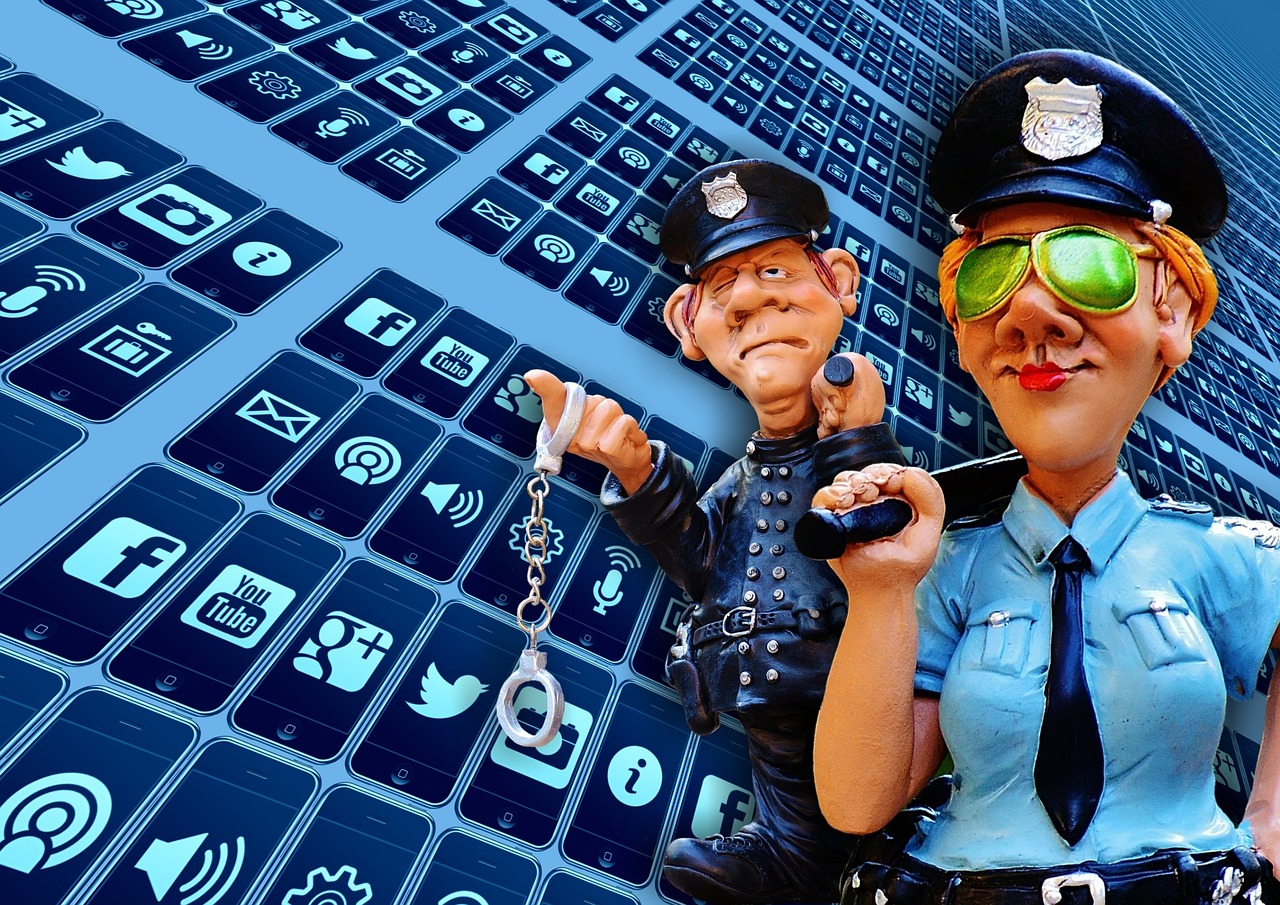
Reporting and Blocking
Encountering a catfisher can be a distressing experience, but knowing how to respond effectively can help mitigate the situation. The first step in dealing with a suspected catfisher is to report their account. Most social media platforms have built-in mechanisms for reporting suspicious behavior. This process is crucial not only for your safety but also for protecting others who may fall victim to the same deception. When you report an account, you’re not just voicing your concerns; you’re contributing to a safer online community.
To report a catfisher, navigate to their profile and look for the report option, which is usually found in the settings or options menu. Each platform may have slightly different procedures, but generally, you will need to provide a brief explanation of why you are reporting the account. Be as detailed as possible, including any suspicious interactions or inconsistencies you've noticed. This will help the platform's moderators take appropriate action.
After reporting, it’s equally important to block the individual. Blocking prevents them from contacting you further and stops them from viewing your profile. To block someone, you typically need to go to their profile page and select the block option. This action is a vital step in reclaiming your online space and ensuring that you’re not subjected to further harassment or deceit.
For your convenience, here’s a quick overview of how to report and block on popular social media platforms:
| Platform | Reporting Steps | Blocking Steps |
|---|---|---|
| Go to the profile > Click on the three dots > Select "Find Support or Report." | Go to the profile > Click on the three dots > Select "Block." | |
| Go to the profile > Click on the three dots > Select "Report." | Go to the profile > Click on the three dots > Select "Block." | |
| Go to the profile > Click on the three dots > Select "Report." | Go to the profile > Click on the three dots > Select "Block." |
Once you’ve reported and blocked the catfisher, it’s essential to take a moment to reflect on the experience. It’s normal to feel a range of emotions, from anger to embarrassment. Remember, you are not alone in this; many have encountered similar situations. Reach out to friends or support groups if you need someone to talk to. Sharing your experience can help you process what happened and regain your confidence.
In addition to personal support, consider seeking resources that specialize in online safety. Many organizations offer guidance and support for victims of online deception. They can provide valuable advice on how to protect yourself in the future and help you navigate the emotional aftermath of encountering a catfisher.
- What should I do if I think I've been talking to a catfisher?
Document any suspicious conversations and report the account to the platform immediately. - Can I get my money back if I was scammed by a catfisher?
It depends on the situation and the platform used for the transaction. Contact your bank or credit card company for assistance. - How can I protect myself from catfishers in the future?
Be cautious about sharing personal information and take your time getting to know someone before trusting them.
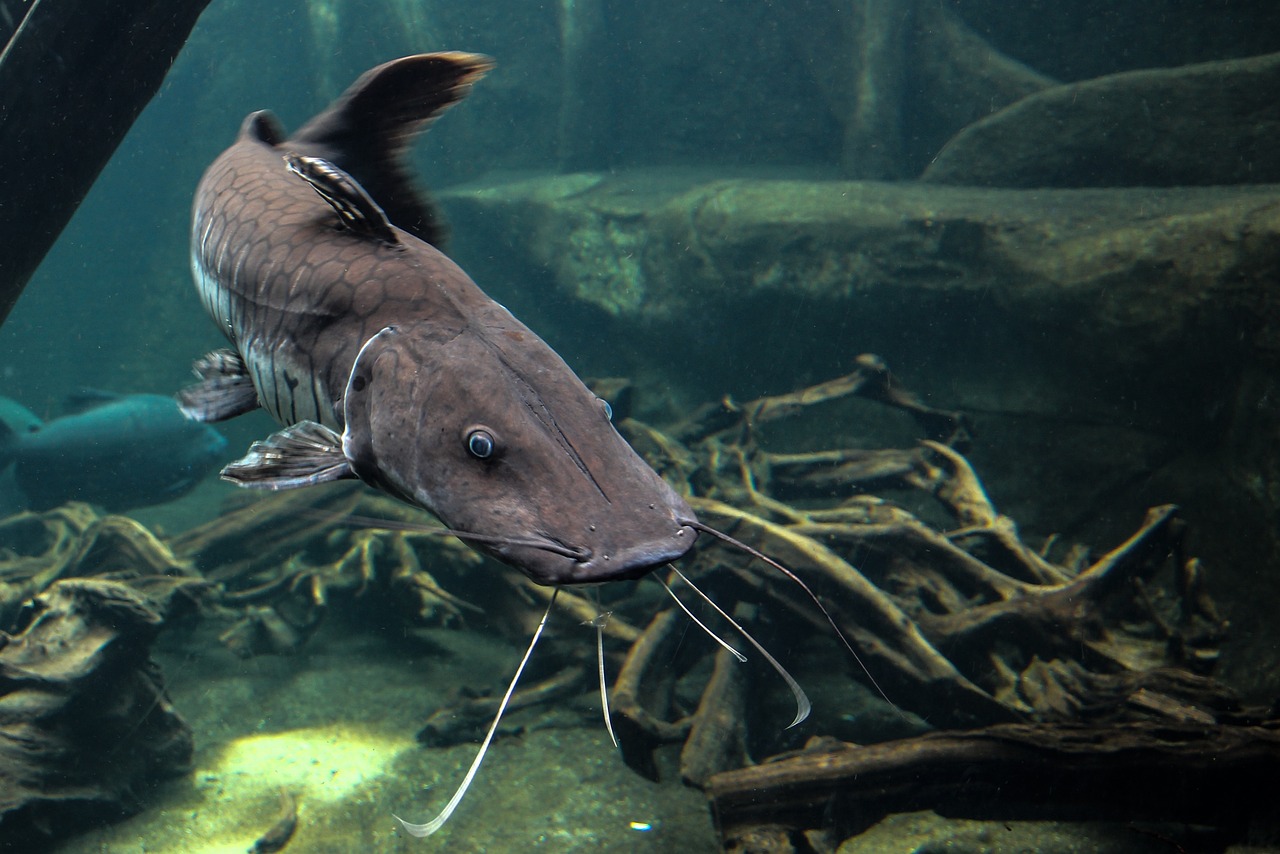
Seeking Support
Encountering a catfisher can be a disheartening experience, leaving victims feeling isolated and confused. If you find yourself in this situation, it’s crucial to remember that you are not alone. There are numerous resources available to help you navigate the emotional turmoil that often accompanies online deception. Seeking support is not just about finding someone to talk to; it’s about connecting with communities and professionals who understand what you’re going through.
First and foremost, consider reaching out to friends or family members who can provide a listening ear. Sharing your experience with someone you trust can help alleviate feelings of shame or embarrassment. You might be surprised to find that others have faced similar situations, and their insights can be invaluable.
In addition to personal connections, online support groups and forums can offer a sense of community. These platforms allow you to share your story in a safe space, connect with others who have been through similar experiences, and gain advice on how to cope. Here are a few types of support you might consider:
- Online Support Groups: Websites like Reddit have dedicated communities where individuals share their experiences and offer support.
- Therapy and Counseling: Professional help can provide coping strategies and emotional support tailored to your needs.
- Helplines: Many organizations offer helplines where you can speak with someone trained to help victims of online deception.
Moreover, it’s important to educate yourself about the psychological effects of catfishing. Understanding that your feelings are valid and common among victims can be empowering. Many organizations provide resources that delve into the emotional impact of catfishing, helping you to process your experience more effectively.
Lastly, if you’re comfortable, consider sharing your story publicly. Whether through blogging, social media, or community talks, your experience can serve as a warning to others and help raise awareness about the dangers of catfishing. By doing so, you not only aid your healing process but also contribute to a larger conversation that can protect others from similar experiences.
In conclusion, seeking support after encountering a catfisher is a vital step towards healing. Whether through personal connections, online communities, or professional help, the road to recovery is easier when you don’t walk it alone.
Here are some common questions individuals have regarding catfishing and seeking support:
| Question | Answer |
|---|---|
| What should I do if I suspect I’m being catfished? | Start by gathering evidence and reaching out to trusted friends or family for advice. Consider reporting the account on the platform. |
| How can I find support after being catfished? | Look for online support groups, talk to a therapist, or connect with organizations dedicated to helping victims of online deception. |
| Is it normal to feel ashamed after being catfished? | Yes, many victims feel ashamed, but it’s important to remember that catfishing can happen to anyone. Seeking support can help you process these feelings. |
Frequently Asked Questions
- What is catfishing?
Catfishing is when someone creates a fake identity online to deceive others, often for emotional manipulation or financial gain. It's like a digital masquerade where the person hides behind a mask, leading to potential heartbreak and distrust.
- How can I recognize if someone is a catfisher?
Look for red flags such as inconsistencies in their story, reluctance to share personal information, or a lack of mutual friends. If their profile seems too perfect or their photos look overly staged, it might be time to dig deeper.
- What should I do if I suspect I'm talking to a catfisher?
If you have suspicions, trust your instincts! Start by doing a reverse image search on their photos and analyze their communication style. If things still feel off, it’s best to report and block them to protect yourself.
- How can I protect myself from catfishing?
Adjust your privacy settings on social media, be cautious about sharing personal information, and take your time getting to know someone before trusting them. Building trust should be gradual, like constructing a sturdy bridge rather than rushing across a shaky plank.
- What are the emotional effects of being a catfishing victim?
Victims often experience feelings of betrayal, sadness, and even shame. It can feel like a punch to the gut when someone you've invested time and emotion in turns out to be a fraud. Seeking support from friends or online communities can be incredibly helpful.
- Can I report a catfisher on social media?
Absolutely! Most social media platforms have procedures for reporting suspicious accounts. It’s important to take action not just for yourself, but to help protect others from falling into the same trap.
- Where can I find support if I’ve been catfished?
There are numerous online resources and support groups specifically for victims of catfishing. These communities can provide a safe space to share experiences, seek advice, and heal from the emotional toll of online deception.



















